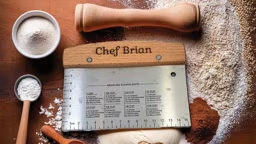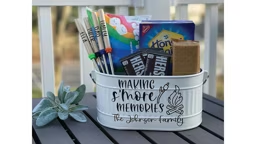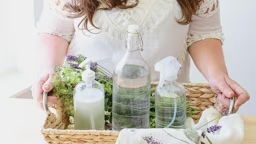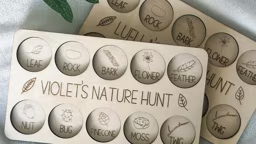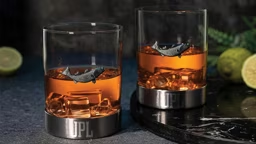
As the summer winds down and preparations for fall begin, preserving our seasonal bounties is a great way to enjoy the benefits of cabin life all year-round. While canning, dehydrating, or freezing our fall harvest may seem like an intimidating endeavor, once you have an understanding of the process, home preservation can be a great way to keep the kitchen shelves stocked and loaded.
For thousands of years, humans have preserved food in a variety of ways, including pickling, salting, fermentation, smoking and drying. The recent history of canning started at the turn of the 19th century, when French inventor Nicolas Appert won a 12,000 franc prize from Napoleon for his method of canning meant as a way to better feed his army. He discovered heating food kills of bacteria and sealing it in airtight glass jars prevents new bacteria from getting in. More than two centuries later, canning food is still one of the most common ways to preserve food for an extended period of time.
See also How to Tap a Maple Tree
1. Pressure Canning
According to the National Center for Home Food Preservation, home pressure canners as we know them today date back to the 1970s. As the name indicates, these canners use pressure to tightly seal jars and cans in order to prevent bacteria from contaminating their contents.
Be sure that you thoroughly read your pressure canner’s instructions before using it to ensure it is properly fitted with the correct amount of cans and the dial gauge is working accurately. When you’re ready to rock, follow the steps below to bring your harvest from perishable to table ready in a matter of hours.
- Sterilize the glass portion of mason jars, including the lid gaskets. Center the canner over the burner on your stove, and put the rack and hot water into the canner. In general, use enough water so that it is two or three inches high in the canner. Note that some foods or different sizes of jars require different levels of water, so be sure to do some research beforehand.
- For hot foods, heat the water to 180 degrees F ahead of time, but don’t boil it or heat it long enough for the water level to go down. For raw foods, bring the water to 140 degrees F.
- Put the filled and covered jars on the rack in the car using a jar lifter, keeping it upright.
- Turn the heat setting up to its highest setting to boil the water and release steam through the vent, roughly ten minutes. This process is called venting or exhausting.
- Place the counterweight or weighted gauge to close the vent in order to allow the canner to pressurize for the next 3 to 10 minutes. Begin timing until the dial gauge shows the needed pressure has been reached. If you don’t have a dial gauge, you’ll notice this will happen when the weighted gauge begins to jiggle. Be sure to read and understand the directions that come with your canner as releasing pressure or under processing can result in unsafe food.
- When you’re done timing, turn off the heat and let the canner cool and de-pressurize naturally. Do not force cool or let the pressure out.
- When the canner is depressurized, remove the weight and vent, and unfasten the lid by lifting it away from you so that the steam does not burn your face.
- Use a jar lifter to remove the jars one at a time and place them on a towel or cooling rack.
- Let them sit between 12 and 24 hours to allow them to cool. Afterward, wash and dry any residue, label the jars, and store in a cool, dry place until you’re ready to eat
2. Boiling Water Bath Canning
This time of canning is great for processing high-acid foods such as most berries, tree fruits, and tomatoes and is done by filling jars with food, covering them completely with water, heating it to roughly 212 degrees F, and processing for between 5 and 85 minutes.
“Boiling removes the oxygen remaining in the jar, which helps to form a tight seal between the lid and the rim. The heat used for this method of canning is sufficient to kill vegetative bacterial cells found in the food,” writes Virginia Tech.
Boiling water bath canning only works with high-acid food (4.6 pH or less) because they prevent the growth of a bacteria called Clostridium botulinum, which cannot be killed with boiling and can cause botulism in people who eat food contaminated with it.
Canning processing times vary based on altitudes, the type of fruit you are canning, and the size of the jars you are using. As with pressure canning, be sure to read all instructions and do your own research to be sure you are practicing safe food preservation standards.
See also 3 Easy Fermentation Recipes to Try
3. Steam Canning
Steam canning is similar to boiling water bath canning but takes longer. The difference is that jars are processed in pure steam around 210 to 212 degrees F, which should be monitored by a temperature. Steam needs to be released through vents during the process so be sure to monitor this during the entire time.
The National Center for Home Food Preservation provides a list of approved recipes for both boiling water bath and steam canning.
Do your own research!
The University of Missouri Extension program is offering an online course from now until Sept. 28 to help those interested in learning how to preserve their food through canning and food safety for $20.
"This course provides research-based information needed to safely and successfully preserve food at home," said Lindsey Stevenson, nutrition and health education specialist, University of Missouri Extension, in a statement. Some highlights of the course include preserving salsas, pie fillings, pickling, sweet spreads, and harvesting and storage of produce.



